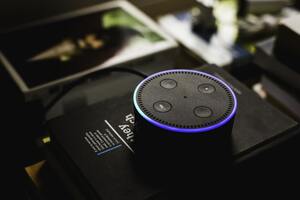IoT allows us to streamline workflows, optimise resources, and deliver better customer service. The rollout of 5G and the impact on download speeds and scalability has driven even greater demand for IoT solutions for consumers, businesses, and the government, says Toby Bargar, the senior tax consultant at Avalara.
From smart speakers to crop management systems to smart infrastructure, the deployment of Internet of Things (IoT) solutions is rapidly accelerating.
As that happens, federal, state and local jurisdictions are going to be tempted to raise much needed dollars by taxing IoT. That’s especially true given that other communications taxable revenues are declining.
In the US, state and local taxation is banned thanks to the Permanent Internet Tax Freedom Act. Meanwhile, the fee collected for federal communications access programs, the Federal Universal Service Contribution, declines as revenues from regulated products declines.
In other words, taxing IoT could be a way to fund municipal, state, and federal initiatives although changing laws and regulations to achieve this could take a while. In the interim, there is a complex web of laws, regulations, and tax liabilities associated with IoT. What’s taxable? What’s not? And most importantly, what is your responsibility in all this?
IoT taxability will likely remain a very grey topic for some time. To understand the nuances and your risk it’s helpful to explore two simple questions:
- Are you selling internet access or not?
- How is connectivity accessed?
Is it internet?
Internet service superficially seems familiar and easy to define. But not all connectivity is considered internet access. Broadly speaking, internet access is tax-free in the United States. As long as you’re selling a service that meets statutory definitions of ISP service, federal law provides a moratorium against state and local taxes.
Unlike the public internet, private connectivity is often taxable. Connecting via a local area network or a wide area network (LAN/WAN) is typically considered a taxable communications service in most states and can be subject to Federal Universal Service as well. There are open questions about whether connections to devices that do not enable a WWW experience meet the federal definitions of ISP service. If they do not meet those definitions, LAN/WAN is the likely destination.
The tax implications of over-the-top vs. embedded connectivity
Understanding exactly how device connectivity is being provided and how that connection is being accessed are two critical considerations in determining communications tax responsibility for IoT.
An embedded connection is one in which your device comes with its own data connection as a component of the sale or service plan. This could be as simple as a smartphone or as complex as a sensor system to monitor air pollution in your community.
The relationships between device makers and network operators can feature widely variable structures and the device provider may need to account for any taxes that need to be collected related to the connection.
Over-the-top use, or bring-your-own internet connectivity, is established when a device is networked over a user-supplied connection. The connection can be wired, Wi-Fi, or purchased separately from a wireless service. Think, for example, of your Amazon Alexa, Nest doorbell, Fitbit watch, and Epson printer.

In each case, any tax on the connection is between the user and their ISP. As an IoT device maker, in these cases you likely have no responsibility regarding the customer’s internet connections.
Drones are a complex example. If you’re just selling devices (the drones), you likely don’t have any additional tax liability. If, however, you’re also reselling a subscription service for the data connection then it gets complicated. Is that connection to the internet or is it WAN/LAN? Depending on how it’s classified means the difference between no taxes and a lot of communications taxes.
Here’s how to prepare for tax uncertainty
Implementing IoT requires managing security, scalability and keeping pace with innovation. And, as you develop and deploy IoT solutions, it’s also going to require keeping an eye on the web of tax rules that may or may not apply to your business.
First, it’s important to monitor the federal and state agencies with jurisdiction over internet taxation for any changes on the horizon.
Second, consider adopting a conservative interpretation of tax guidance to ensure you’re not caught off guard. Discuss with companies similar to yours how they’re paying (or not paying) communications taxes. Most important, consult with your tax and legal advisors to stay abreast of the latest developments and how you can navigate this brave new tax world.
The author is Toby Bargar, the senior tax consultant at Avalara.
About the author
Toby Bargar is the senior tax consultant at Avalara. He has spent the last 18+ years consulting with clients concerning complex transaction tax issues, particularly in the field of communications tax and regulatory cost surcharges.
Comment on this article below or via Twitter: @IoTNow_OR @jcIoTnow










